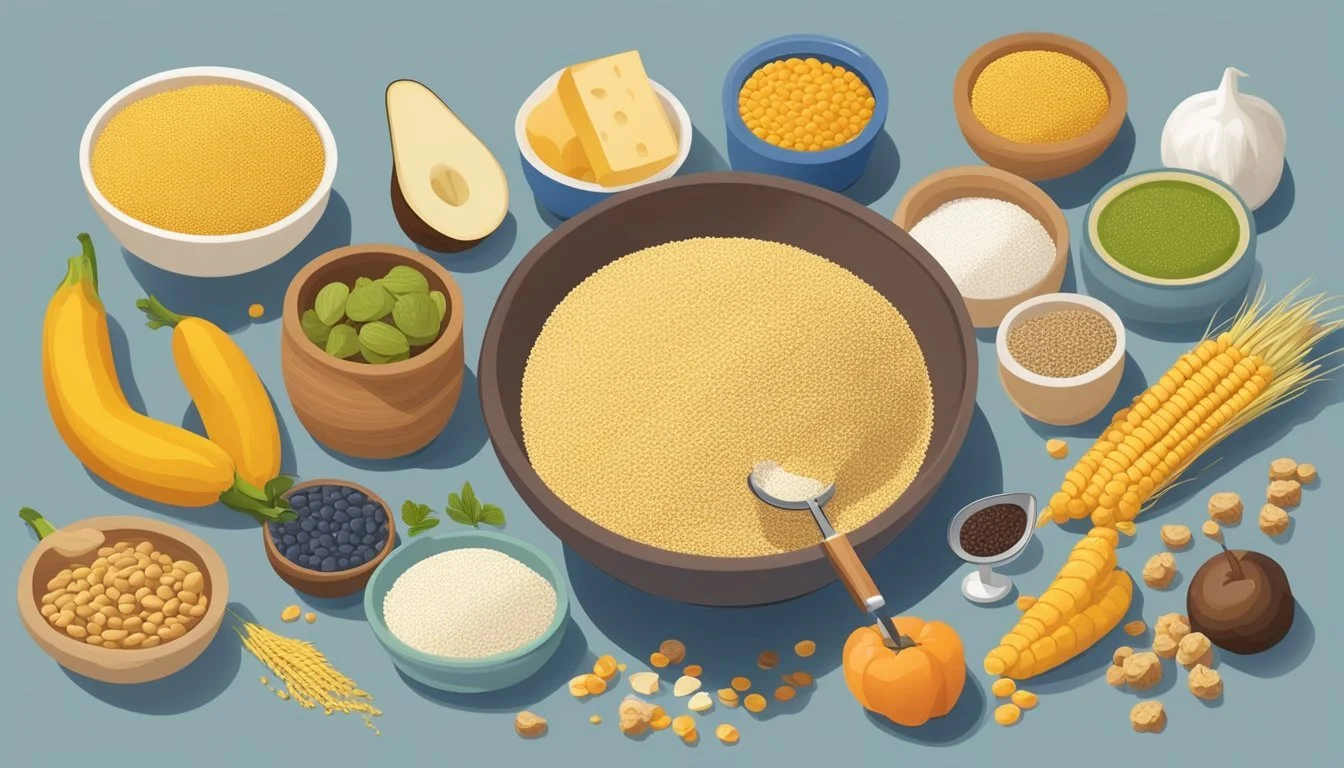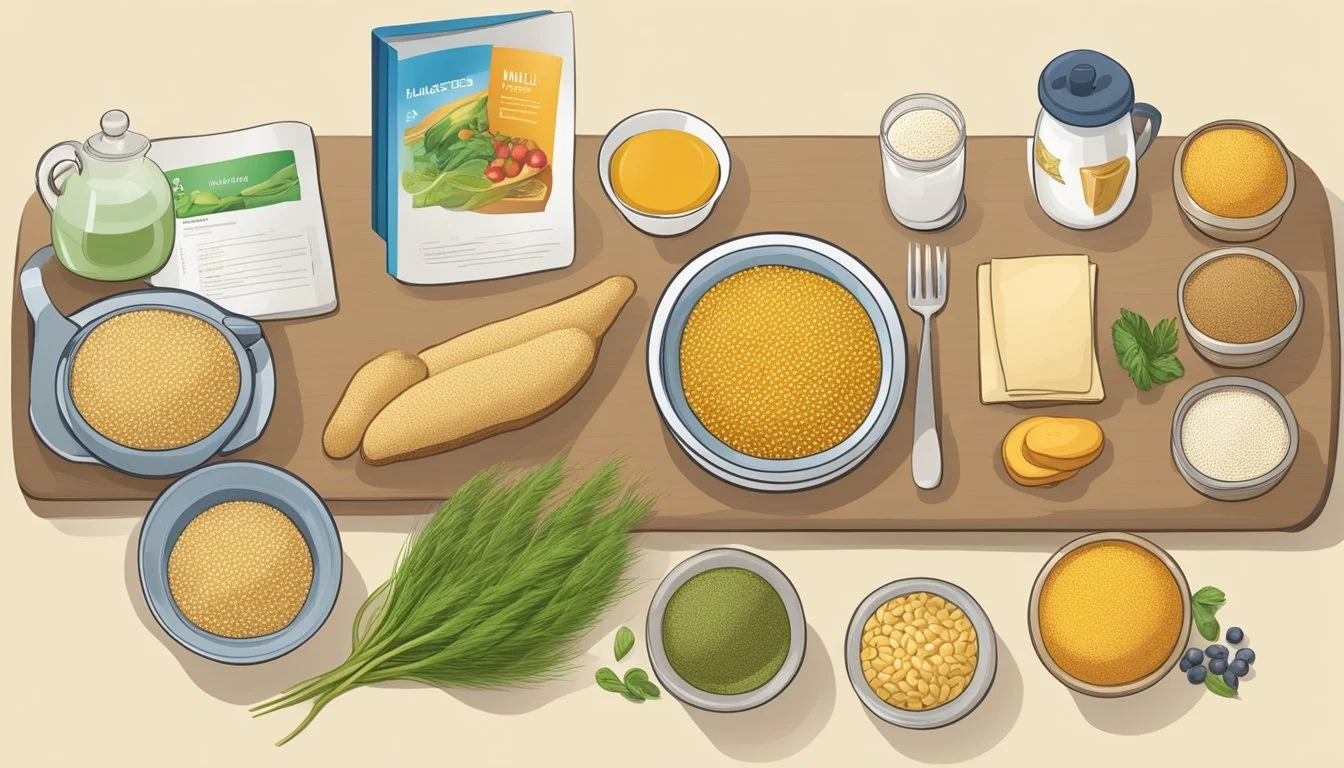Can Diabetics Eat Millet?
Health Benefits and Considerations
For those managing diabetes, diet plays a crucial role in controlling blood sugar levels. One grain that has gained attention for its potential benefits is millet. Millets are a group of small-grained cereals that are packed with nutrients like fiber, protein, and vital minerals. Millet is not only safe for diabetics to eat, but it can also be beneficial due to its low glycemic index (GI), which helps prevent blood sugar spikes.
Rich in essential nutrients, millet provides a balanced mix ideal for maintaining healthy blood sugar levels. It contains 6.11 grams of protein and 2.26 grams of fiber per cup, making it a hearty addition to any meal. Additionally, it offers essential minerals such as magnesium and potassium, which contribute to its overall health benefits.
Studies have indicated that including millet in a diabetic diet can help manage and even lower the risk of type 2 diabetes. This is particularly significant because high-fiber, low-GI foods like millet aid in keeping blood sugar stable over time. Whether incorporated into breakfast cereals, baked goods, or savory dishes, millet can be a versatile and nutritious component of a diabetes-friendly diet.
Understanding Diabetes and Dietary Needs
Managing diabetes effectively requires a keen focus on diet, as proper nutritional choices can greatly impact blood sugar levels and overall health. Diabetics should be aware of how various nutrients and foods affect their condition.
The Role of Diet in Diabetes Management
Dietary choices play a crucial part in managing diabetes mellitus. Type 2 diabetes and prediabetes are largely influenced by blood glucose levels and insulin resistance. Foods with a low glycemic index (GI) help maintain steady blood sugar levels, reducing the likelihood of spikes. Carbohydrates are particularly important, as they are the main macronutrient affecting blood sugar.
The American Diabetes Association recommends focusing on fiber, lean protein, and healthy fats to manage blood sugar effectively. High-fiber foods like whole grains, vegetables, and legumes slow the absorption of sugars and enhance insulin sensitivity. Including foods that promote steady glycemic response can significantly help in diabetes management.
Nutritional Considerations for Diabetics
Diabetics must pay close attention to the nutritional content of their meals. A balance of protein, fiber, and carbohydrates is essential. For instance, a cup of cooked millet contains around 6.11 grams of protein and 2.26 grams of fiber. These nutrients are beneficial for controlling blood glucose levels and improving cholesterol profiles.
Essential vitamins and minerals like magnesium and potassium are also critical. Magnesium helps in regulating insulin action and glucose levels, while potassium supports cardiovascular health. Maintaining a diet rich in nutrients can help manage blood glucose levels more effectively, making it easier to control diabetes.
Staying informed about how different foods and their nutritional compositions affect diabetes can lead to better dietary choices and improved diabetes management.
Millet as a Dietary Choice for Diabetics
Millet offers notable benefits for diabetics, including its impact on blood glucose levels and nutritional content. Below, the discussion covers types of millets, their comparison with other grains, and specific benefits related to blood sugar control.
Types and Nutritional Profiles of Common Millets
Several types of millet are suitable for diabetics, each with unique nutritional benefits. Foxtail millet stands out for its high fiber and phenolic content. Pearl millet is rich in magnesium, essential for numerous biochemical processes. Finger millet provides substantial protein and iron, supporting holistic health. Little millet and Kodo millet also offer fiber and other essential nutrients.
A cup of cooked millet typically contains:
Protein: ~6.11 grams
Fiber: ~2.26 grams
Magnesium: ~76.6 milligrams
Potassium: ~108 milligrams
These nutritional components contribute to the overall health benefits for diabetics.
Comparing Millet to Other Grains
Millet has a lower glycemic index (GI) compared to common grains like white rice and maize. This means millet causes a slower rise in blood sugar levels. White rice tends to spike blood glucose quickly, making it less ideal for diabetics. Brown rice has a moderate GI but still higher than millet. Quinoa and barley are often compared to millet for their low GI and high fiber content.
Consider the following comparison (GI values approximate):
Millet: 54-69
White Rice: 72-89
Brown Rice: 68-70
Quinoa: 53
Barley: 28-35
Millet outperforms many grains, making it an effective component in diabetic diets.
The Benefits of Millet for Blood Sugar Control
The low GI of millet is beneficial for maintaining stable blood glucose levels. The fiber content in millet aids digestion and prolongs the absorption of sugars, preventing blood sugar spikes. Additionally, millet contains resistant starch, which improves insulin sensitivity, vital for diabetes management.
High-fiber, low-GI foods like millet support consistent energy levels and better glycemic control. Foxtail millet has been especially noted for its positive effects in dietary interventions for diabetics. These benefits underscore the potential of millet as a staple food for those managing diabetes.
How to Incorporate Millet into a Diabetic Diet
Millet is a nutritious grain that can help with blood sugar management due to its low glycemic index and high fiber content. Here are some meal ideas and tips on adjusting portion sizes to better fit into a diabetic diet.
Millet-Based Meal Ideas and Recipes
One way to include millet in a diabetic diet is through millet porridge. Preparing a warm bowl of millet porridge for breakfast can provide a fiber-rich start to the day. Cooking it with unsweetened almond milk and adding a handful of berries can enhance its nutritional profile without spiking blood sugar.
Millet can also be used in salads. Cooking and cooling millet before combining it with greens, vegetables, and a source of protein such as grilled chicken can create a satisfying meal.
Replacing traditional pasta with millet pasta is another healthy swap. This can reduce glucose spikes and increase dietary fiber intake. Millet flour can be utilized in baking to make lower-GI bread, which can be a better option for maintaining stable blood sugar levels.
Adjusting Portion Sizes and Frequency
Monitoring portion sizes is essential. For individuals with diabetes, sticking to half a cup of cooked millet per meal can ensure that the carbohydrate intake is managed effectively.
Incorporating millet into a meal plan should be done with attention to frequency. It's beneficial to alternate between millet and other whole grains to provide variety and balance. Including millet in one or two meals per day can help with glucose tolerance without overwhelming the system.
It's important to complement millet with vegetables, lean proteins, and healthy fats. This balanced approach can help maintain steady blood sugar levels and improve overall dietary compliance. Frequent monitoring and adjustments based on individual responses are crucial for optimal management.
Lifestyle Considerations for Diabetes Control
Adopting healthy habits significantly aids in managing diabetes, including maintaining a balanced diet, engaging in regular physical activity, and monitoring weight. These practices help control blood pressure, maintain healthy triglyceride levels, and reduce the risk of cardiovascular diseases.
The Importance of Physical Activity and Weight Management
Regular physical activity plays a crucial role in diabetes management. Exercise improves the body's sensitivity to insulin, helping to regulate blood sugar levels more effectively. Activities such as walking, cycling, and resistance training are particularly beneficial.
Moreover, maintaining a healthy weight through balanced nutrition and exercise helps reduce the risk of complications like high blood pressure and cardiovascular disease.
Weight management is vital for individuals with diabetes. Losing even 5-10% of body weight can lead to significant improvements in blood sugar control. It also helps lower triglyceride levels, which are important factors in reducing the risk of heart disease.
Balanced lifestyle changes, including consistent physical activity and effective weight management, provide a foundational approach to controlling diabetes.
The Global Perspective on Millet and Diabetes
Millets, including varieties like sorghum and jowar, play a significant role in managing diabetes in various parts of the world. Current research establishes their effectiveness in controlling blood glucose levels and reducing the incidence of diabetes.
Millet's Cultural Significance in Africa and Asia
In Africa and Asia, millet is more than just a staple crop; it is integral to cultural diets and agriculture. Sorghum and jowar are commonly used in these regions due to their resiliency and nutritional benefits.
In India, millet-based foods are often part of diabetic meal plans. In Africa, millet cultivation supports community food security and provides nutrition that aids in diabetes management.
Traditional recipes utilizing millet are deeply enshrined in these cultures, promoting not only health but also agricultural sustainability.
Research and Intervention Studies on Millet
Multiple studies highlight millet's ability to lower blood glucose levels and manage diabetes effectively. For instance, research indicates that foxtail millet has high fiber and phenolic content, beneficial for diabetics experiencing polyphagia and frequent food cravings.
Further interventions show millets release glucose gradually, stabilizing blood sugar levels when compared to rice. Studies on pearl millet demonstrate increased insulin sensitivity and reduced triglyceride levels. Systematic reviews and meta-analyses support these findings, validating the positive impact of millets in preventing diabetes and aiding in weight control for diabetic individuals.




